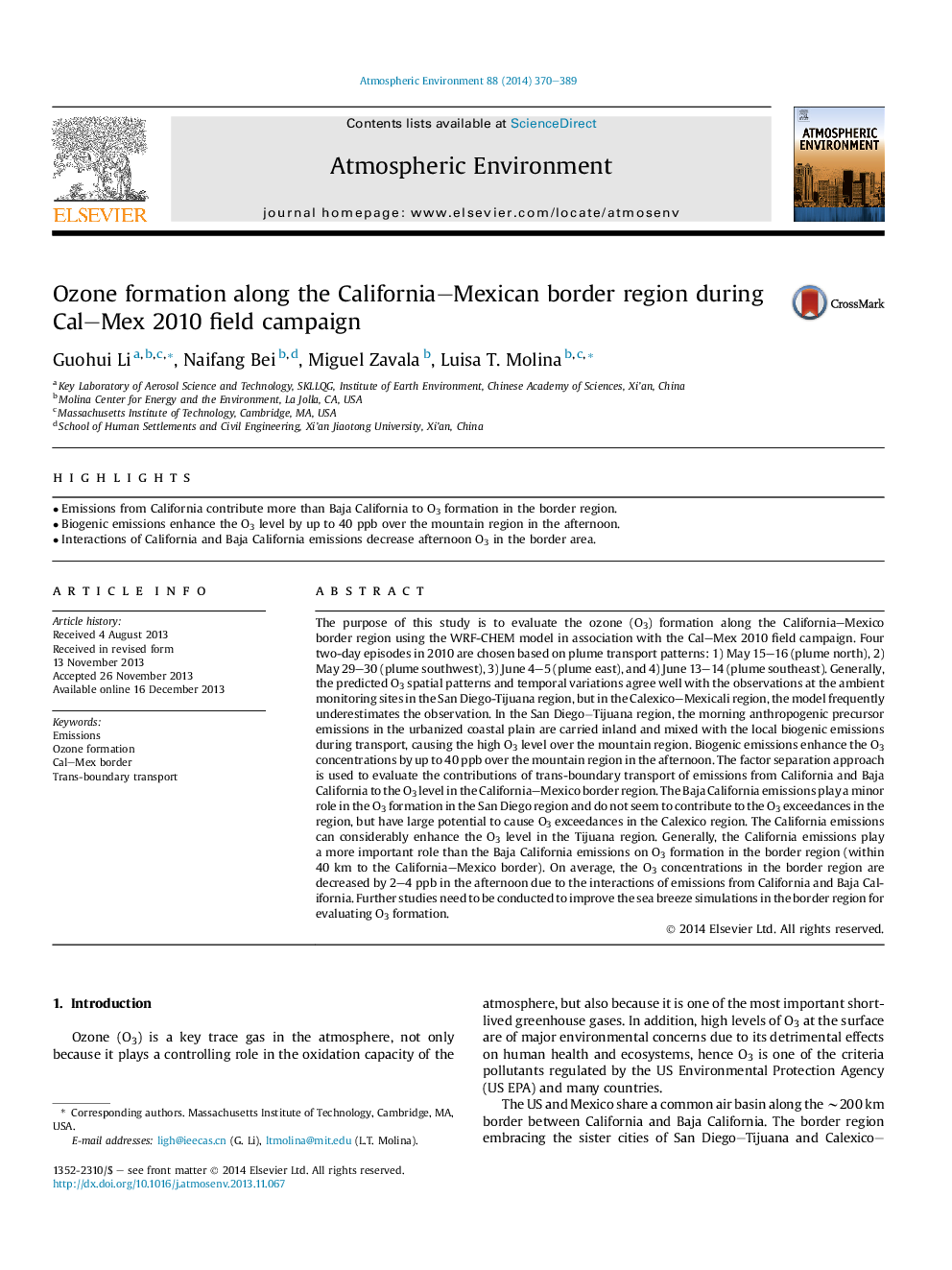| کد مقاله | کد نشریه | سال انتشار | مقاله انگلیسی | نسخه تمام متن |
|---|---|---|---|---|
| 6340922 | 1620383 | 2014 | 20 صفحه PDF | دانلود رایگان |
عنوان انگلیسی مقاله ISI
Ozone formation along the California-Mexican border region during Cal-Mex 2010 field campaign
دانلود مقاله + سفارش ترجمه
دانلود مقاله ISI انگلیسی
رایگان برای ایرانیان
کلمات کلیدی
موضوعات مرتبط
مهندسی و علوم پایه
علوم زمین و سیارات
علم هواشناسی
پیش نمایش صفحه اول مقاله

چکیده انگلیسی
The purpose of this study is to evaluate the ozone (O3) formation along the California-Mexico border region using the WRF-CHEM model in association with the Cal-Mex 2010 field campaign. Four two-day episodes in 2010 are chosen based on plume transport patterns: 1) May 15-16 (plume north), 2) May 29-30 (plume southwest), 3) June 4-5 (plume east), and 4) June 13-14 (plume southeast). Generally, the predicted O3 spatial patterns and temporal variations agree well with the observations at the ambient monitoring sites in the San Diego-Tijuana region, but in the Calexico-Mexicali region, the model frequently underestimates the observation. In the San DiegoâTijuana region, the morning anthropogenic precursor emissions in the urbanized coastal plain are carried inland and mixed with the local biogenic emissions during transport, causing the high O3 level over the mountain region. Biogenic emissions enhance the O3 concentrations by up to 40 ppb over the mountain region in the afternoon. The factor separation approach is used to evaluate the contributions of trans-boundary transport of emissions from California and Baja California to the O3 level in the California-Mexico border region. The Baja California emissions play a minor role in the O3 formation in the San Diego region and do not seem to contribute to the O3 exceedances in the region, but have large potential to cause O3 exceedances in the Calexico region. The California emissions can considerably enhance the O3 level in the Tijuana region. Generally, the California emissions play a more important role than the Baja California emissions on O3 formation in the border region (within 40 km to the California-Mexico border). On average, the O3 concentrations in the border region are decreased by 2-4 ppb in the afternoon due to the interactions of emissions from California and Baja California. Further studies need to be conducted to improve the sea breeze simulations in the border region for evaluating O3 formation.
ناشر
Database: Elsevier - ScienceDirect (ساینس دایرکت)
Journal: Atmospheric Environment - Volume 88, May 2014, Pages 370-389
Journal: Atmospheric Environment - Volume 88, May 2014, Pages 370-389
نویسندگان
Guohui Li, Naifang Bei, Miguel Zavala, Luisa T. Molina,